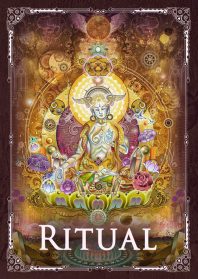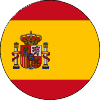Ritual

The ritual regulates people’s relations according to the human (social), earthly or heavenly plan. Forms of human behavior are conditioned by certain reactions and reflections according to culture, tradition, or even education, acquiring the character of conditional and unconditional symbols. Knowledge of these forms forces us to ritualize habits or to seek a mental justification for our participation in the representation of ourselves in space.
Temporal, extra-temporal, or spatial characteristics regulate us, and this is already a ritual. By the way, we relate to the order behind the essence of a ritual, we can judge the subjectivity and objectivity of its evaluation. Be that as it may, the ritual is an order, and it can perhaps also be named Maat (the ancient Egyptian principle of law and order, equated with the divine meaning).
It turns out that we can regulate an important concept in the history of human development – before humans worshipped gods, they worshipped an established order, which over time began to take the form of law, which is a certain set of rules, actions, and behavior.
Humans used to interact with space by being in tune with it and then began to do the will of heaven and earth. This principle remains natural to human nature, and in reality, we all represent different orders, to which patterns of thought are added, relying on the language of communication and existence.
This means that we willy-nilly continue to participate in the macrocosmic plane that integrates us and interacts with us according to our totemic or egregoric principles, which can be summarized in the general concept of the originating cause, Shakti energy as a certain condition necessary for our connection with the source.
The ritual enables us to keep ourselves in the egregore of tradition, to be attuned to higher consciousness. Not to that which we represent, but to that which originally presented us to this world, even if it is collective, meaning collected without the expression of individuality.
Higher consciousness is light, and if we do not understand this and do not accept it, then we are not endowed with higher consciousness, we are closed to it. So, our functions are undervalued, and to get out of this state we need the discipline of relating to space, which is not just a ritual, but its matrix.
Beyond that, the ritual is also a service to space, a service to the interaction of heaven and earth. Every ancient culture associated its emergence with universal consciousness, a particular vibration of the universal. These vibrations have names that became deified over time — Ishtar, Demeter, Cybele, Lakshmi, Pachamama, etc. These are the matrices containing the seed, as the illuminating seed of Aton.
An important aspect of understanding ritual as a discipline is the parallelism and consistency in both the becoming and the carrying out of ritual. The ritual may have a time of formation, taking us back to ancient Egypt, and a state of consciousness that cannot be classified by time, as it is classified by effort.
And this is an important point because behind the formation of every tradition (hence, ritual) lies a certain higher cosmic consciousness. So, we can say that this consciousness was different 2,000 years ago, but we can also say that people’s need and interest in ancient Egypt confirms that this consciousness is of interest to our spirit even today.
Or take dream consciousness, which presents to us an irrational but everyday reality that is also a condition of our ritualization (albeit unconsciously). And here we should perhaps point to the aboriginal consciousness that has lived with it for 30-40 thousand years, and on the other hand, we all represent it in our parallel realities. So ritual is a formula representing consciousness, and we can only tentatively determine the chronological sequence of its formation.
Speaking about ritual, it is first important to understand its integrality, which can be viewed from the perspective of one or several cultures. The problem of monoculture is that it introduces its limitations, and even if it takes into account, say, a group of twelve gods, it has a cultural superstructure (something like the causality of the handling of events). Any ritual is a particular form of attunement, and, accordingly, much depends on what kind of conscious participation we are in, from which comes the format of knowing the ritual as such.
The Vedas have their own difficulties and disputes when certain groups of people transfer their national affiliation to any sphere of life and claim supremacy in knowledge. For example, it is traditionally believed that the Vedas come from India, while at present there are many Vedas: Russian Vedas, Lithuanian, Mongolian, Ukrainian, Kazakh, etc., but everyone forgets that the basis of knowledge is not national, and there can be no primacy here. Just as the physical laws are universal for the entire planet, so the laws of knowledge are the same for all.
This is indicated in the Vedas, the peculiarity of which is the indication that knowledge came to people from heaven. Moreover, the entire ancient world built its life according to the plan of heaven and initially nothing was divided. So, it turned out that the four Vedas (Rigveda, Yajurveda, Samaveda, Atharvaveda) were transmitted by the heavens. Whether a person perceives it or not does not matter, but people have lived by their laws for thousands of years.
In turn, the knowledge of the Vedas, which is the basis of any ritual, is further represented and developed in the whole body of knowledge, revealing the various possibilities of the ritual.
- Samhitas — hymns and mantras that keep us connected to higher consciousness.
- Brahmanas — the over-personal factor, a certain state of consciousness capable of holding light.
- Aranyaki — concentration on holding the connection, which includes the ritual.
- Upanishads — contemplation of truth, elimination of ignorance.
- Dharmashastras — instruction in performing the ritual.
- Smriti — awareness of one’s actions.
- Puranas — perceptions of creation and destruction.
- Shruti — cosmic vibrations.
- Nyaya — is the representation of the soul as an independent substance, for the cognition of which proper thinking and the means of understanding reality are important.
- Vedanga — ritualism and ceremonialism.
- Ramayana — the rational understanding of the irrational.
- Mahabharata — where everything is.
- Upaveda — the guidance of all processes.
In one way or another, this knowledge represents the process and result of knowledge of the higher through a certain pattern of ritual attunement. And this is the most important thing for us, because talking about the higher and even about the cosmos from the position of science is one thing, and it is quite another thing to see what the consciousness, attuned in a special way, sees.
So, for example, Samhita is a special term that conveys a certain state in which the Aborigines of Australia have lived and are living now. Without this state, it is impossible to manifest one’s nature in the knowledge of ritual and sacred texts. And the same Aborigines ritually maintain this state, and in general, it is more important to them than any texts.
The next predestination is the source of energy belonging to the Brahman category, the worship of which in ancient times required a certain adjustment, which was a precursor to the practical action aimed at generating power. Brahman is primarily that which can be generated, growing, expanding. In clearer terms, it is an act of fertility, similar to the act or principle of Demeter.
Well, naturally, the generative force is linked to the space that represents this force. This space is characterized by a concept developed in the Aranyakas. In the space of our planet, we are sacrificed to the plants, the vegetative world, which is the main one here. Subordination to the plant world is our material reality.
Human beings need to contemplate the truth expressed by the Upanishads in the space presented to them, so that our material tasks may develop and be fulfilled here. In essence, two important concepts collide here – needs and desires, which were manifested like Marduk’s cognition in ancient Babylonia.
After this, we can talk about a kind of Dharmashastra order or Maat order. One cannot go further without Smriti, which allows us to become aware of our actions and can itself be defined as a Vedic ritual.
There needs to be a place where we can dwell — that place between our inhalation and exhalation. This is a certain form of independence from lower vibrations. But in order to do that, we have to relate the two realities, the spiritual and the material. By correlating the two realities we come to the Puranas, which reflect a kind of process of transformation and change that is of course most fully represented in the Daoist tradition.
This is the ritual of the creation of the material world as a kind of egg or seed, within which everything unfolds, and we are both creators and witnesses. In this case, we become subject to the cosmic vibrations and the attainment of a state where we can abide in a special reality, or a state of Shruti. This is the true preciousness that we can know in this material world.
The consequence of all the above for the individual becomes wisdom, a peculiar state of Nyaya, highlighting the spiritual cloud, the nebula (the ocean of Garbhadaka), forming a supreme closure from destructive processes. The state itself becomes a lotus stem when knowledge blossoms within us, which is identified with the attainment of the Golden Fleece. And when we get in touch with the higher, we really begin to understand the ritualism and ceremonialism expressed by the Vedangas. The architecture of ritual is like the architecture of the Universe, where everything comes together. Ritual allows us to build the connections and attunement necessary for this.
All our performances are impossible without the inner order that forms what is called the subtle body. On a subtle level, ritual expresses the geometry of the rose, allowing us to imagine parallel and sequential processes in which the mystery of the divine is revealed. This level is identified with the ascent of the pyramid (Mount Meru) or with the embodiment of the mandala on which the light of the stars and constellations is strung. This knowledge cannot be mastered without the Ramayana (rational understanding of the irrational) or the African obsession.
The process of cognition here is so multi-layered that without the language of the yantra it cannot even be visualized. However, the macrocosm has its own plan, and this plan is the Temple of Light, in which all the processes of Mahabharata are recorded. It can represent the mindfulness of a different plane, which is represented in the Upaveds.
It turns out that ritual is both purification and attunement necessary for our progress and fulfillment of our possibilities.







